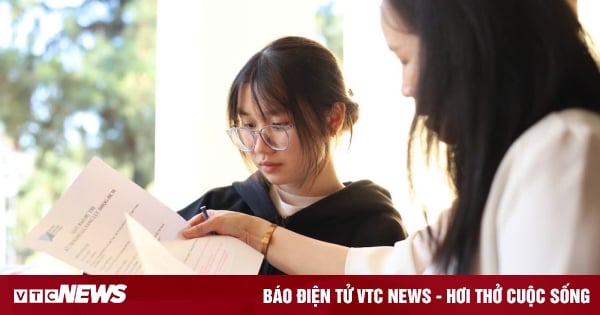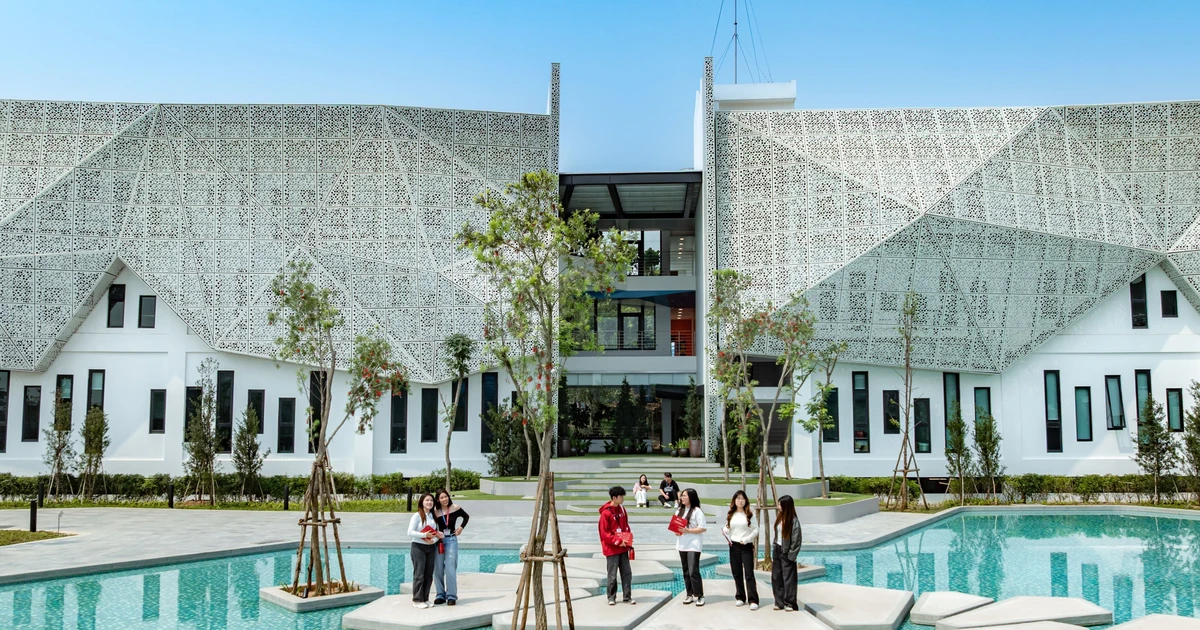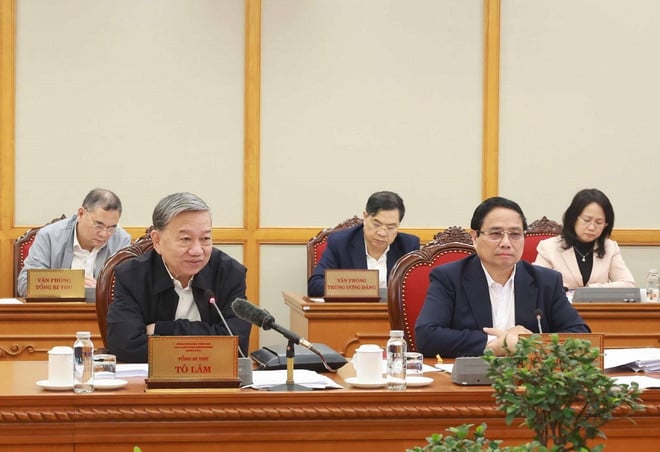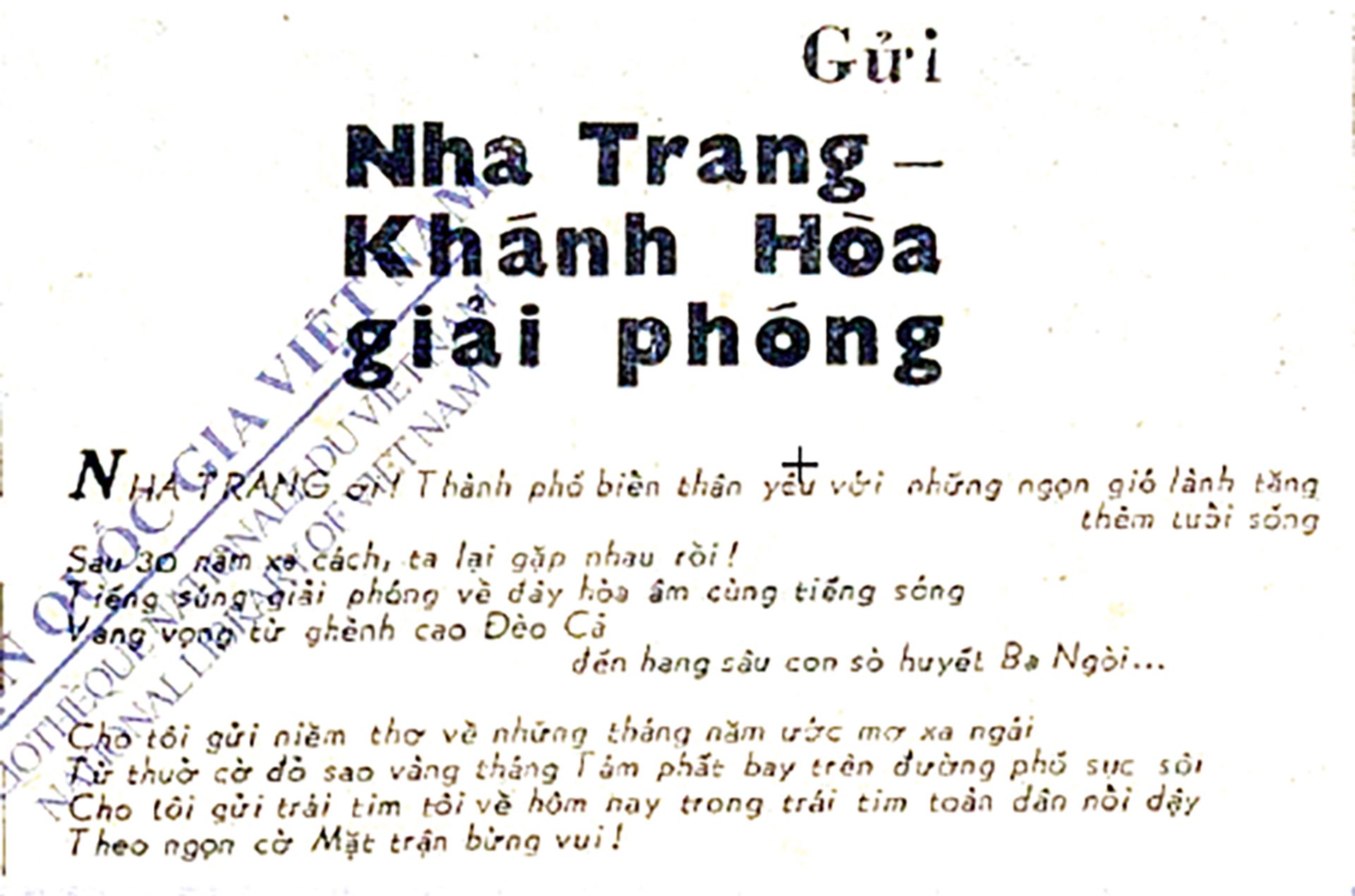High Price Service
Not long ago, the debate between Associate Professor Dr. Do Van Dung, former Principal of Ho Chi Minh City University of Technical Education, and Dr. Pham Nhu Nghe, former Director of the Department of Higher Education, Ministry of Education and Training, about the name of the CLC program attracted public attention. The Ministry of Education and Training plans to require the benchmark score of the CLC program to be at least equal to the general program.
At that time, Mr. Nghe said how can it be called a CLC program when those who take the regular program fail to pass but those who take the CLC program pass? Mr. Dung argued quite fiercely with Mr. Nghe. Mr. Dung said that if he advertised the school's program as a "CLC service program", many candidates would register to study. Because with such conditions to ensure CLC, air conditioning, good lecturers, foreign training programs, teaching in English, small class sizes... then even if the entrance score is lower, after 4 years, the number of students graduating from this program will have better quality than students from the normal program.
Students who graduate from the general program have an employment rate of 86%, but 100% of students from the CLC program have jobs after graduation. So if this is not CLC, then what is it?
 |
Poor valedictorians who overcame difficulties received the Tien Phong Newspaper's "Supporting Valedictorians" scholarship. Photo: NHU Y |
Discussing this issue, leaders of some universities said that currently all training programs have output standards. Why does the CLC program have a slightly lower entrance score, but still ensure output quality? Because CLC classes have to devote more resources to have a longer process than mass classes. In fact, in recent years, some universities have set the CLC program's benchmark score lower than the standard program. Some schools even allow students who have been admitted to any program of the school to take an additional exam organized by the school to be considered for the CLC program. With this form, students may not initially be admitted to the desired major because their scores are lower than the benchmark, but after the school's exam, they are admitted.
According to the State Audit's assessment in a meeting with the Ministry of Education and Training a few years ago, this program is only slightly different from the previous program in that the tuition fees are higher (some schools charge 3 times more), English is enhanced and English output standards are higher, classes have fewer students and modern equipment plus air conditioning; but the input is lower...
Thus, it cannot be called CLC but only higher service, air conditioning, more selective lecturers. Not to mention, the CLC program has been giving birth to unique private school models in public schools - when a public school has two programs with two different tuition levels, creating a deep divide between rich and poor from the classroom. When a student graduates and goes to work, society will establish a name for the type of training they received, CLC or low, instead of by identity and intelligence.
Tuition fee ceiling needed
Dr. Doan Minh Dang, a scientist working in Germany, said that the major universities he studied and worked at in the Netherlands, Belgium, and Germany did not have specialized programs like those in Vietnam. According to the credit system, students at the school are allowed to choose the same liberal arts subjects, so tuition fees are treated equally.
Mr. Dang said that university education in Europe is quite uniform, making it convenient for students to apply to study a few exchange semesters at other schools and countries. Schools do not build their own training systems. Dr. Nguyen Thi Thu Hien, senior expert in Biomedicine, Aalborg University Hospital (Aalborg, Denmark), affirmed that in Denmark, domestic students are exempted from university tuition fees.
Dr. Pham Hiep, Director of the Institute for Educational Research and Knowledge Transfer, Thanh Do University, said that there should be a plan to cap tuition fees for training programs in public universities in Vietnam.
Mr. Hiep stated that the State must have the right to control public schools. One of the forms of this control is to cap tuition fees. With the current situation of accredited majors, CLC, English, advanced..., educational institutions are allowed to determine their own tuition fees based on technical standards.
According to Mr. Hiep, Vietnam is one of the few countries in the world where domestic students (domestic students) are not subject to a tuition ceiling. In countries with typical market economies such as the US, domestic students are subject to a tuition ceiling when they enter the local university. This is an immutable principle of public universities.
“Training costs need to be covered by the State to some extent. Autonomous universities in Vietnam are often cut back on spending, and students of these schools, burdened with high tuition fees, must receive special privileges such as separate scholarships and separate credit funds. This means that before autonomy, financial resources were invested in the school, after autonomy, these funds are invested directly in students,” said Mr. Hiep.
According to him, currently, Vietnam is implementing halfway, tuition fees are high but support for learners is not significant. Mr. Hiep reaffirmed his view that CLC programs must have a tuition ceiling, not a lump sum like now, because otherwise public schools will become private schools. The ceiling level is 2, 3 or even 5 times higher, based on technical standards calculations.
Mr. Hiep warned that the situation of allowing public schools to determine their own tuition fees would lead to two consequences: public schools becoming private schools and private schools not being able to develop because public schools still have brands. Mr. Hiep gave a specific example in Taiwan (China), where he was a researcher, universities also have many types of training programs. However, there are large fluctuations in tuition fees for international students, while for domestic students, tuition fees are always controlled at a level that people can afford.
Taiwan's (China) formula is to base tuition fees on the poorest 20% of the population, so low-middle income families can still try to send their children to university.
Dr. Pham Hiep, Director of the Institute for Educational Research and Knowledge Transfer, Thanh Do University, said that there should be a plan to cap tuition fees for training programs in public universities in Vietnam. Mr. Hiep affirmed that the State must have the right to control public schools.
Countries around the world have different systems but related to training content, for example some non-English speaking countries have training programs in English, both improving the qualifications of domestic students and attracting international students.
Mr. Hiep said that the tuition fees for CLC programs in Vietnam are only affordable for families from well-off families. This leads to a vicious cycle where children from poor families have difficulty accessing good schools and programs even if they are able to study. Tuition fees unintentionally become a barrier.
Medium quality trap
At the 2024 Higher Education Conference, Deputy Minister of Education and Training Hoang Minh Son emphasized that in order to improve the quality of training, it is necessary to increase the total expenditure on higher education, because the current expenditure level is still too low compared to the requirements. According to Mr. Son, it is necessary to increase investment costs for higher education, focusing on investment in facilities, teaching staff...
Currently, the cost of paying salaries and allowances for lecturers accounts for about 50% of total training costs. If the income of lecturers is not competitive with the business sector and other countries in the world, it will be difficult to retain good lecturers.
Many times, at seminars and conferences on university education, Mr. Son always affirmed that university autonomy has been effective but has reached its limit. University education cannot have a strong change without timely breakthrough financial mechanisms and policies. That is the trap of average quality of university education, one of the biggest bottlenecks hindering the development of university education.
Prof. Dr. Le Anh Vinh, Director of the Vietnam Institute of Educational Sciences (Ministry of Education and Training), said that the three major financial problems that the Vietnamese university education system is facing are lack of funding, inequality and lack of financial autonomy.
Mr. Vinh pointed out three major financial challenges in university education today: schools are severely lacking in funding, tuition fees for public schools are very low, and other sources of revenue from services, science and technology services, aid, sponsorship, and donations are also too low.
According to a group of experts from the World Bank, Vietnam needs to increase investment with the proportion of the state budget spent on university education from 0.23% to at least 0.8-1% of GDP before 2030.
Source: https://tienphong.vn/an-so-chat-luong-cao-trong-truong-dai-hoc-tra-lai-ten-cho-chuong-trinh-dao-tao-post1729586.tpo


![[Photo] General Secretary To Lam receives King Philippe of Belgium](https://vstatic.vietnam.vn/vietnam/resource/IMAGE/2025/4/1/e5963137a0c9428dabb93bdb34b86d7c)
![[Photo] President Luong Cuong and King Philippe of Belgium visit Thang Long Imperial Citadel](https://vstatic.vietnam.vn/vietnam/resource/IMAGE/2025/4/1/cb080a6652f84a1291edc3d2ee50f631)

![[Photo] Prime Minister Pham Minh Chinh meets with King Philippe of Belgium](https://vstatic.vietnam.vn/vietnam/resource/IMAGE/2025/4/1/be2f9ad3b17843b9b8f8dee6f2d227e7)
![[Photo] Close-up of Vietnam's sniffer dog team searching for earthquake victims in Myanmar](https://vstatic.vietnam.vn/vietnam/resource/IMAGE/2025/4/1/d4949a0510ba40af93a15359b5450df2)
















![[Photo] Myanmar's capital in disarray after the great earthquake](https://vstatic.vietnam.vn/vietnam/resource/IMAGE/2025/4/1/7719e43b61ba40f3ac17f5c3c1f03720)
































































Comment (0)